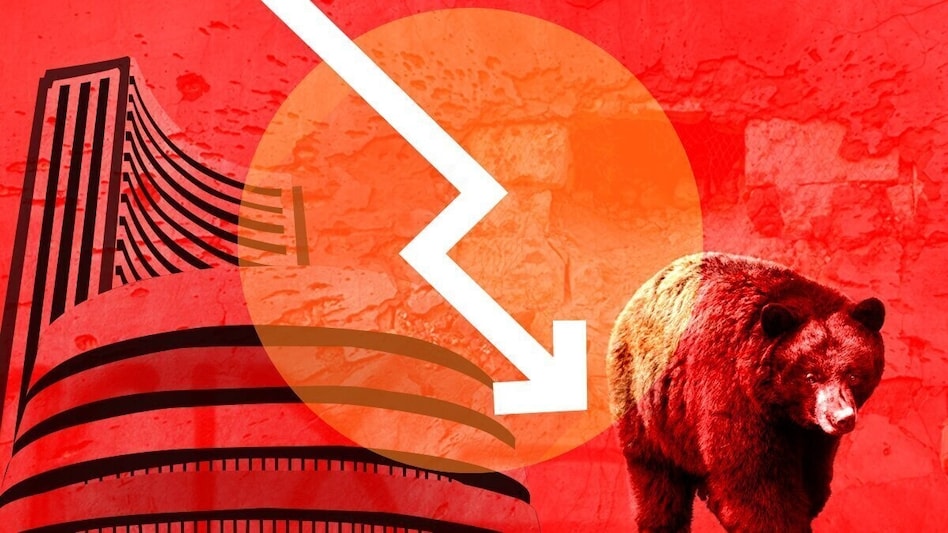 On Monday, S&P500 futures for June delivery were trading at 4,874, down 236.25 points or 4.62 per cent. Dow Jones futures declined 1,564 points, or 4.06 per cent, to 36,966.
On Monday, S&P500 futures for June delivery were trading at 4,874, down 236.25 points or 4.62 per cent. Dow Jones futures declined 1,564 points, or 4.06 per cent, to 36,966.  On Monday, S&P500 futures for June delivery were trading at 4,874, down 236.25 points or 4.62 per cent. Dow Jones futures declined 1,564 points, or 4.06 per cent, to 36,966.
On Monday, S&P500 futures for June delivery were trading at 4,874, down 236.25 points or 4.62 per cent. Dow Jones futures declined 1,564 points, or 4.06 per cent, to 36,966. US index futures led by S&P500 and Dow Jones fell up to 5 per cent in Monday's trade, hinting at more downside for Wall Street indices later today, despite a crash sale of up to 10 per cent in the past two sessions. This is reminding analysts on Dalal Street of the year 1987.
On October 19, 1987, global financial markets endured one of the worst single-day crashes in history dubbed as 'Black Monday'. The Dow Jones Industrial Average plunged 22.6 per cent that day, sending shockwaves across major exchanges in London, Tokyo, and Hong Kong, Angel One explained.
On Monday, S&P500 futures for June delivery were trading at 4,874, down 236.25 points or 4.62 per cent. Dow Jones futures declined 1,564 points, or 4.06 per cent, to 36,966.
As a result, the domestic indices Sensex and Nifty, which recovered a bit earlier today, hit fresh lows and were bracing for one of the worst closings in history. The BSE Sensex was trading at 72,120.23, down 3,244.46 points, or 4.31 per cent. The BSE Sensex had fallen 4,389.73 points on June 4, 2024, following the Lok Sabha elections. It had fallen 3,934.72 points on March 23, 2020, due to nationwide lockdown on account of Covid 19. Earlier on March 12, 2020, also it fell 2,919.26 points due to Coronavirus concerns.
Unlike 1987, India is no longer on the sidelines. Deeply embedded in global capital flows, the Indian market has emerged as one of the worst-hit in this unfolding crisis, Angel One said.
"Just as in 1987, this sell-off has not been driven by any one data point but by a storm of sentiment, policy shock, and lightning-fast trading. In 1987, automated program trading intensified the crash; in 2025, algorithmic and high-frequency systems have accelerated the declines, responding almost instantly to negative signals. Panic selling has overridden fundamentals, drawing eerie parallels between then and now," Angel One said.
As global liquidity tightens, India's ability to deliver consistent and broad-based earnings growth will be a critical differentiator in sustaining FII flows and domestic interest, said MOFSL.
"If EPS contraction starts, more than 10 per cent correction in Nifty and a level below (or around) 20,000 level is likely. Watch the upcoming earnings season carefully. In a challenging environment, we have observed earnings cut by up to 30 per cent and till date we have seen earnings cut by 7 per cent/ 2 per cent for CY25 and CY26 (Bloomberg) from Sep-24," Manish Jain, Chief Strategy Officer & Director, Mirae Asset Capital Markets.
Panic is rarely a strategy — staying anchored to fundamentals is key, said Arvind Kothari, smallcase manager & Founder, Niveshaay.
"We urge investors to remain calm and focused, avoiding impulsive decisions driven by short-term noise. While it's difficult to pinpoint which sectors will rebound first, but domestic-focused areas like FMCG and consumption appear better placed in the near term. Export-heavy or globally linked sectors may take longer," Kothari said.
Globally, if there is a greater correction in response to reciprocal tariffs, investing after a 15 per cent S&P 500 peak-to-trough decline has a good track record, Michael Cembalest said in a April 2 note.
He noted that the US business optimism has rolled over, so has JPMorgan's preferred leading indicator (new orders less inventories).
"Q1 GDP growth estimates have declined to 0.5 per cent (after excluding the impact of surging gold prices in Q1 and many producer price and consumer price surveys are rising again," he said.